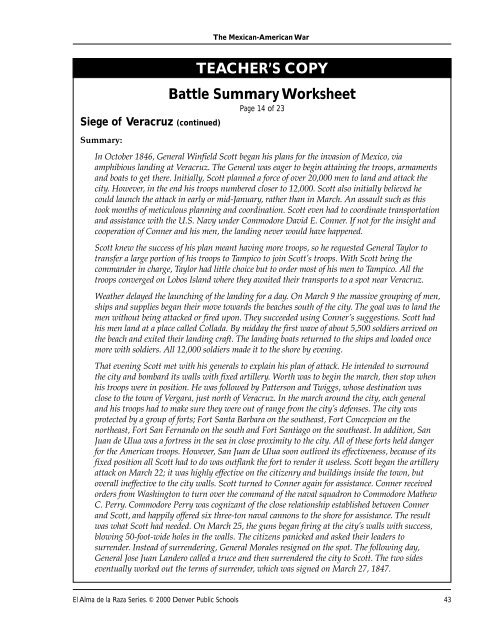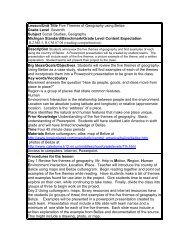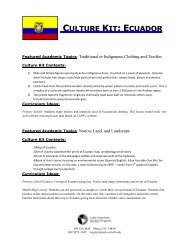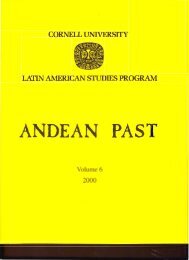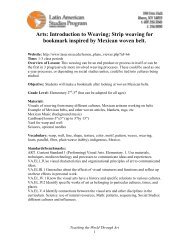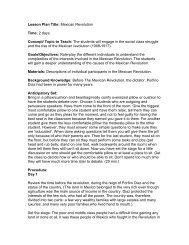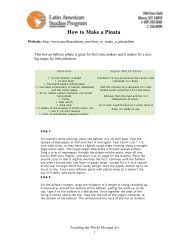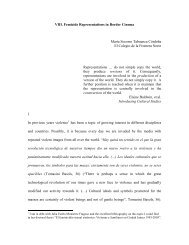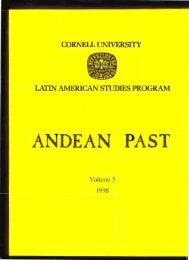The Mexican American War PDF - Denver Public Schools
The Mexican American War PDF - Denver Public Schools
The Mexican American War PDF - Denver Public Schools
You also want an ePaper? Increase the reach of your titles
YUMPU automatically turns print PDFs into web optimized ePapers that Google loves.
<strong>The</strong> <strong>Mexican</strong>-<strong>American</strong> <strong>War</strong><br />
Siege of Veracruz (continued)<br />
Summary:<br />
TEACHER’S COPY<br />
Battle Summary Worksheet<br />
Page 14 of 23<br />
In October 1846, General Winfield Scott began his plans for the invasion of Mexico, via<br />
amphibious landing at Veracruz. <strong>The</strong> General was eager to begin attaining the troops, armaments<br />
and boats to get there. Initially, Scott planned a force of over 20,000 men to land and attack the<br />
city. However, in the end his troops numbered closer to 12,000. Scott also initially believed he<br />
could launch the attack in early or mid-January, rather than in March. An assault such as this<br />
took months of meticulous planning and coordination. Scott even had to coordinate transportation<br />
and assistance with the U.S. Navy under Commodore David E. Conner. If not for the insight and<br />
cooperation of Conner and his men, the landing never would have happened.<br />
Scott knew the success of his plan meant having more troops, so he requested General Taylor to<br />
transfer a large portion of his troops to Tampico to join Scott’s troops. With Scott being the<br />
commander in charge, Taylor had little choice but to order most of his men to Tampico. All the<br />
troops converged on Lobos Island where they awaited their transports to a spot near Veracruz.<br />
Weather delayed the launching of the landing for a day. On March 9 the massive grouping of men,<br />
ships and supplies began their move towards the beaches south of the city. <strong>The</strong> goal was to land the<br />
men without being attacked or fired upon. <strong>The</strong>y succeeded using Conner’s suggestions. Scott had<br />
his men land at a place called Collada. By midday the first wave of about 5,500 soldiers arrived on<br />
the beach and exited their landing craft. <strong>The</strong> landing boats returned to the ships and loaded once<br />
more with soldiers. All 12,000 soldiers made it to the shore by evening.<br />
That evening Scott met with his generals to explain his plan of attack. He intended to surround<br />
the city and bombard its walls with fixed artillery. Worth was to begin the march, then stop when<br />
his troops were in position. He was followed by Patterson and Twiggs, whose destination was<br />
close to the town of Vergara, just north of Veracruz. In the march around the city, each general<br />
and his troops had to make sure they were out of range from the city’s defenses. <strong>The</strong> city was<br />
protected by a group of forts; Fort Santa Barbara on the southeast, Fort Concepcion on the<br />
northeast, Fort San Fernando on the south and Fort Santiago on the southeast. In addition, San<br />
Juan de Ulua was a fortress in the sea in close proximity to the city. All of these forts held danger<br />
for the <strong>American</strong> troops. However, San Juan de Ulua soon outlived its effectiveness, because of its<br />
fixed position all Scott had to do was outflank the fort to render it useless. Scott began the artillery<br />
attack on March 22; it was highly effective on the citizenry and buildings inside the town, but<br />
overall ineffective to the city walls. Scott turned to Conner again for assistance. Conner received<br />
orders from Washington to turn over the command of the naval squadron to Commodore Mathew<br />
C. Perry. Commodore Perry was cognizant of the close relationship established between Conner<br />
and Scott, and happily offered six three-ton naval cannons to the shore for assistance. <strong>The</strong> result<br />
was what Scott had needed. On March 25, the guns began firing at the city’s walls with success,<br />
blowing 50-foot-wide holes in the walls. <strong>The</strong> citizens panicked and asked their leaders to<br />
surrender. Instead of surrendering, General Morales resigned on the spot. <strong>The</strong> following day,<br />
General Jose Juan Landero called a truce and then surrendered the city to Scott. <strong>The</strong> two sides<br />
eventually worked out the terms of surrender, which was signed on March 27, 1847.<br />
El Alma de la Raza Series. © 2000 <strong>Denver</strong> <strong>Public</strong> <strong>Schools</strong> 43


